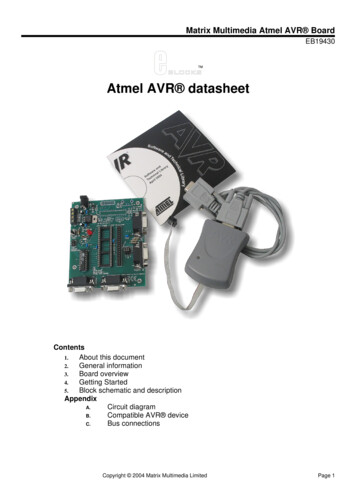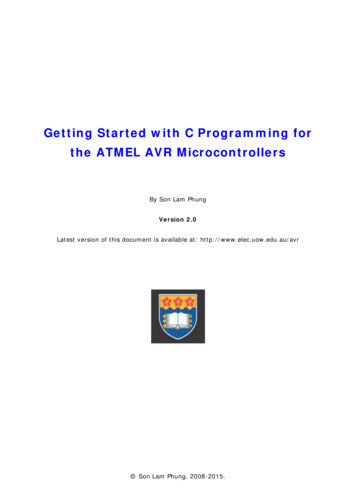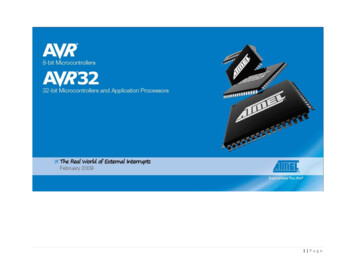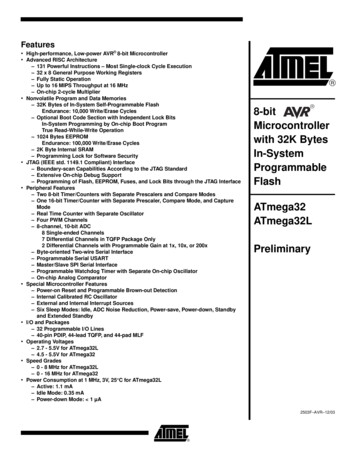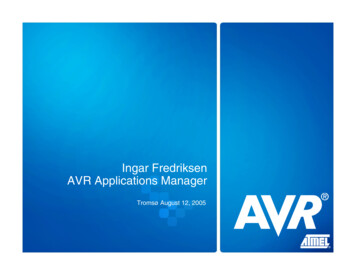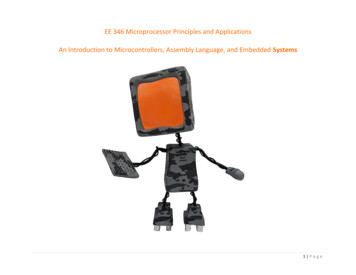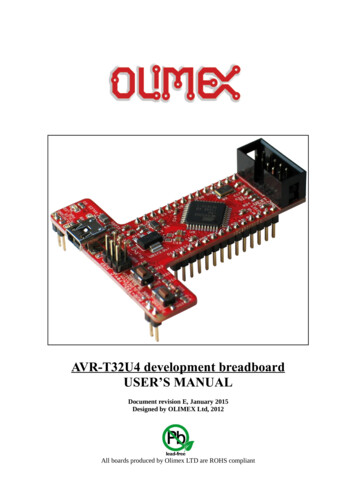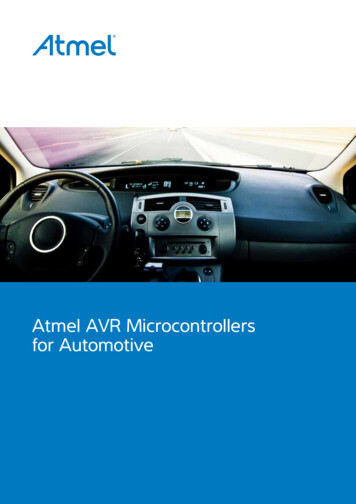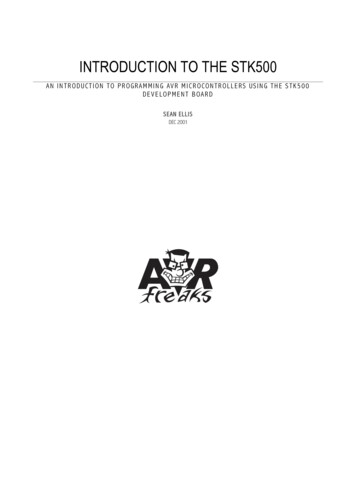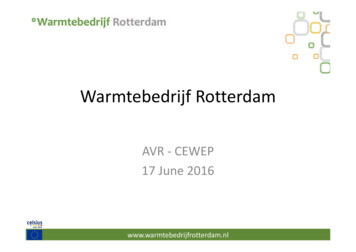
Transcription
Warmtebedrijf RotterdamAVR ‐ CEWEP17 June 2016www.warmtebedrijfrotterdam.nl
ContentBackgroundFeatures, statistics & environmental impactOrganization & business modelAVR – Heat offtakeThe Heat HubFuture plans
Background District heating in Rotterdamhas been in place for manydecades; Primarily supplied by gas‐firedgeneration assets; Rotterdam was one of themost polluted cities in theNetherlands due to theindustry; WBR was founded to matchthe available waste heat inthe harbor area in order tomeet demand in the city andreduce emissions;
Heat networks RotterdamWaste incineratorand energy plantBooster stationHoogvlietBooster stationGroene KruiswegHeat hubBrielselaanHeat stationMaasstad Hospital
Features and statistics Investment 100 mio Capacity 105 MWth COD: 1 October 2013 Annual volume of 1.500.000 GJ Sustainability 50% CO2‐reduction of circa 85 ktonper year 10% reduction of NOX‐emissions
Integrated business modelCity ofRotterdam(100%) Invests in equipment for recovery of industrialwaste heat Closing and managingcommercial contracts Invests in and constructs infrastructure forindustrial waste heat transport Dispatching heat andelectricity Ensures security of supply Business development Performs maintenance and management Optimization of heat supply
Position and role in the heat chain
AVR heat offtake AVR supplies the waste heat from AVI in Rozenburg; Heat supply started from 1 October 2013; Multiple heat sources at AVR; Energy from waste Residual Heat from Caustic Water Treatment Main equipment; 3 supply pumps frequency driven3 return pumps2 buffer pumps4 heat exchangersBuffer for heat storage
www.warmtebedrijfrotterdam.nl
The Heat HubVirtual impressionActual building
Pumps @ The Heat HubFive pumps:A Largest pump charges and discharges the heat accumulatorB Two pumps are for back up to return the water to the waste heat sourceC Two pumps situated behind the heat exchangers and areconnected to the district heating network on the north bank of RotterdamBBCA C
Heat accumulator @ The Heat Hub Volume of 5.000 m3Charged when low heat demand in the district heating gridDischarged when high heat demand in the district heating gridAccumulator is also used as back‐up capacity to ensure the security of supplySpeed of discharging: 6 ‐ 10 hours
Future plans: regional expansion
Future plans: impression https://youtu.be/JyaVmYEZMzs
Future plans: Transition to Smart Grid
Thank you for your attentionAndrew Mol 31(0)10 205 jfrotterdam.nlwww.celsiuscity.euThis project has received funding from the EuropeanUnion’s Seventh Framework Programme forresearch, technological development anddemonstration under grant agreement no 314441.Co-funded by the Intelligent Energy EuropeProgramme of the European Union.The sole responsibility for the content of this presentation lies with the authors. It does not necessarily reflect the opinion of the European Union.Neither the European Investment Bank nor the European Commission are responsible for any use that may be made of the information contained therein.
District heating in Rotterdam has been in place for many decades; Primarily supplied by gas‐fired generation assets; Rotterdam was one of the most polluted cities in the Netherlands due to the industry; WBR was founded to match the available waste heat in the harbor area in order to
